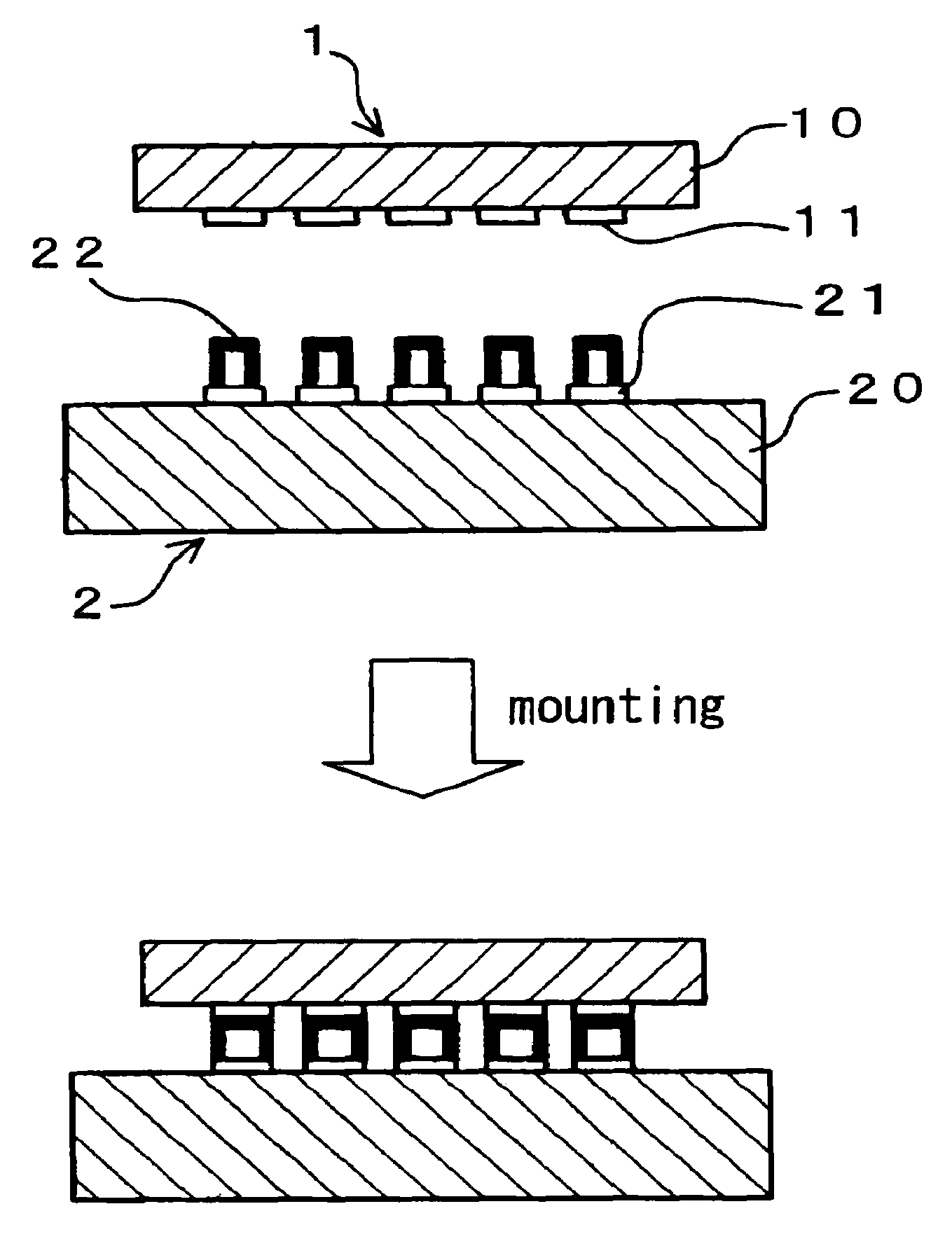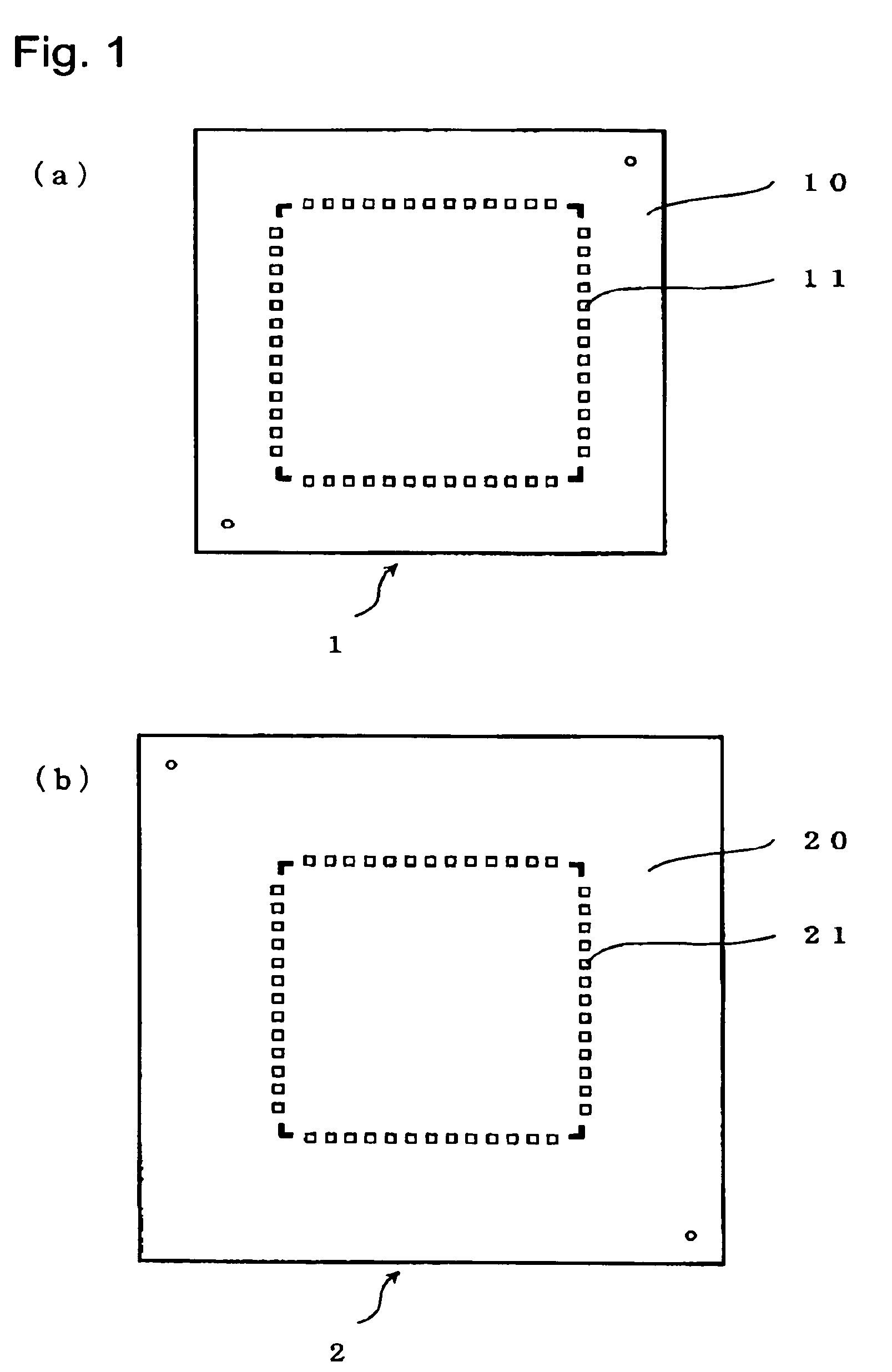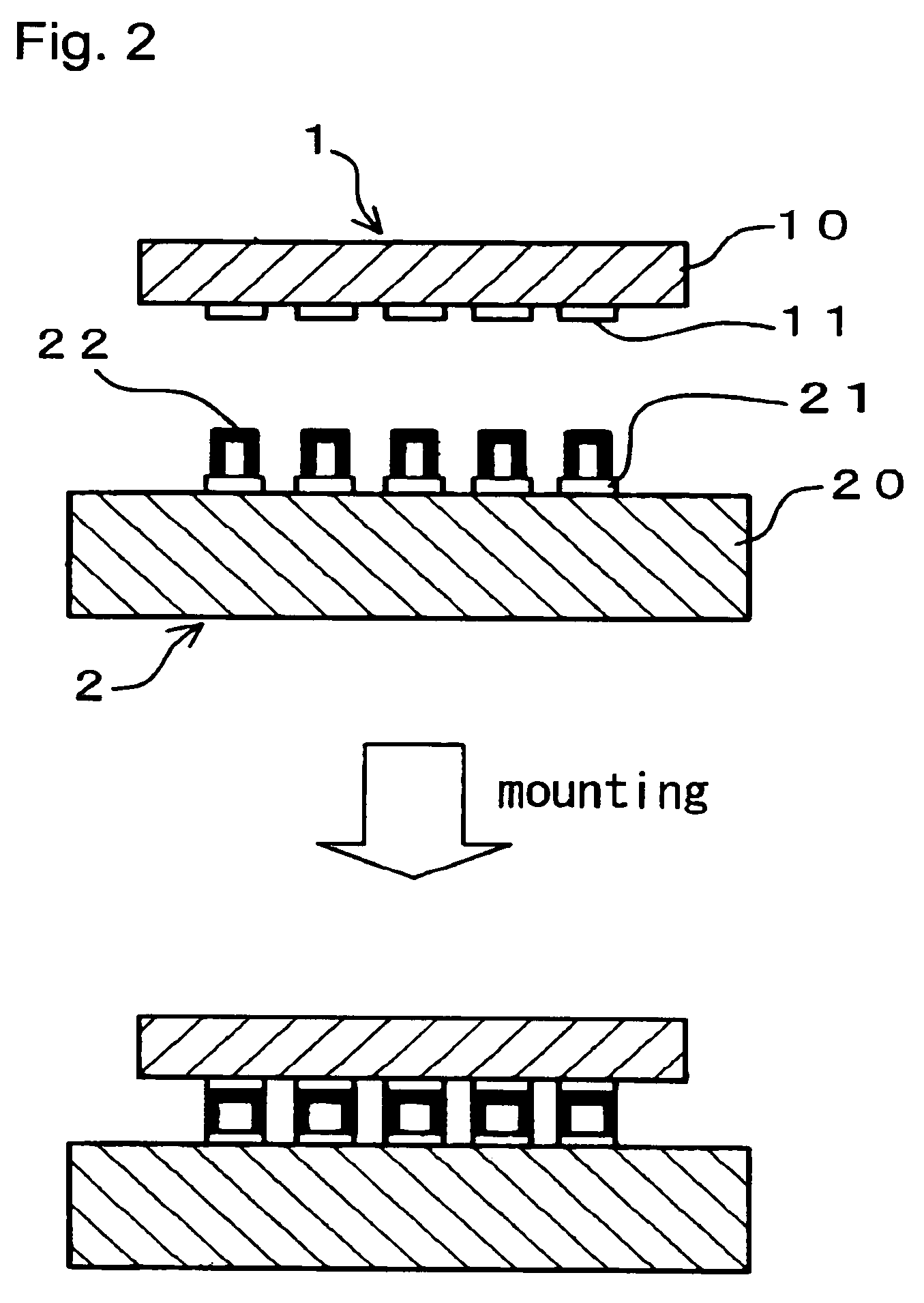Semiconductor device and process for manufacturing the same
a technology of semiconductor devices and bumps, applied in semiconductor devices, semiconductor/solid-state device details, printed circuits, etc., can solve problems such as affecting the productivity and reliability of semiconductor devices, bumps that cannot maintain their elasticity, and disorders in the functions of semiconductor devices, so as to reduce the damage to circuits and the like formed on a substrate, the bumps' elastic properties are not thermally changed, and the bumps' elasticity cannot maintain its elasticity.
- Summary
- Abstract
- Description
- Claims
- Application Information
AI Technical Summary
Benefits of technology
Problems solved by technology
Method used
Image
Examples
Embodiment Construction
[0043]The semiconductor device according to the present invention is manufactured by mounting a first substrate on a second substrate, and is characterized in that electrodes formed on the first substrate and electrodes formed on the second substrate are electrically connected via bumps.
[0044]Embodiments of the present invention are described below.
[0045]As shown in FIG. 1(a), on a Si substrate 10 of a semiconductor chip 1, one or more electrodes 11 and other circuits (not shown) are formed by using conventional materials and a conventional process.
[0046]As shown in FIG. 1(b), on a Si substrate 20 of an interposer 2, one or more electrodes 21 and other circuits (not shown) are formed by using conventional materials and a conventional process.
[0047]As shown in FIG. 2, elastic bumps 22 are bonded on each of the one or more electrodes 21. Since layout of the electrodes 11 formed on the Si substrate 10 corresponds to layout of the electrodes 21 formed on the Si substrate 20, the semicon...
PUM
 Login to View More
Login to View More Abstract
Description
Claims
Application Information
 Login to View More
Login to View More - R&D
- Intellectual Property
- Life Sciences
- Materials
- Tech Scout
- Unparalleled Data Quality
- Higher Quality Content
- 60% Fewer Hallucinations
Browse by: Latest US Patents, China's latest patents, Technical Efficacy Thesaurus, Application Domain, Technology Topic, Popular Technical Reports.
© 2025 PatSnap. All rights reserved.Legal|Privacy policy|Modern Slavery Act Transparency Statement|Sitemap|About US| Contact US: help@patsnap.com



